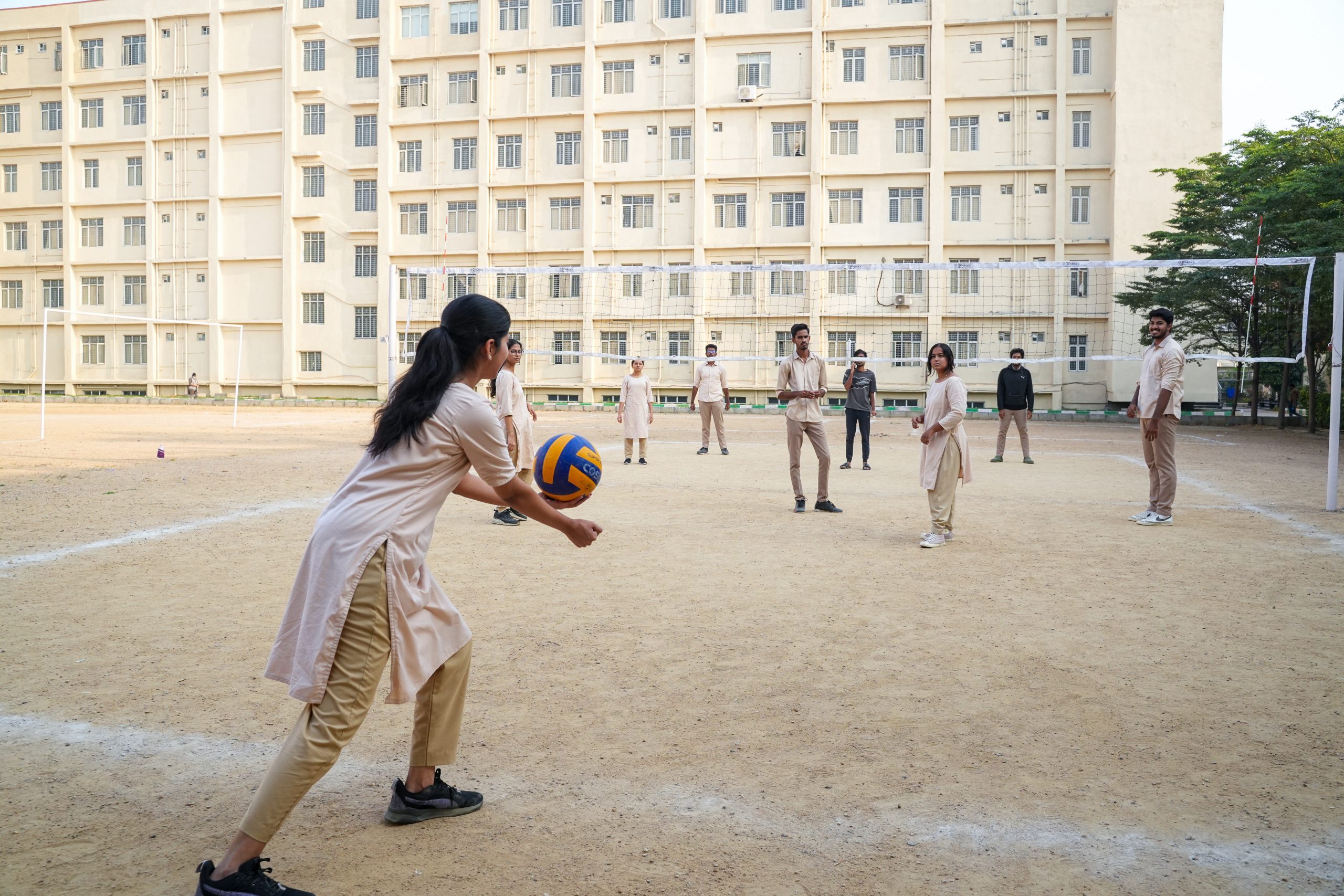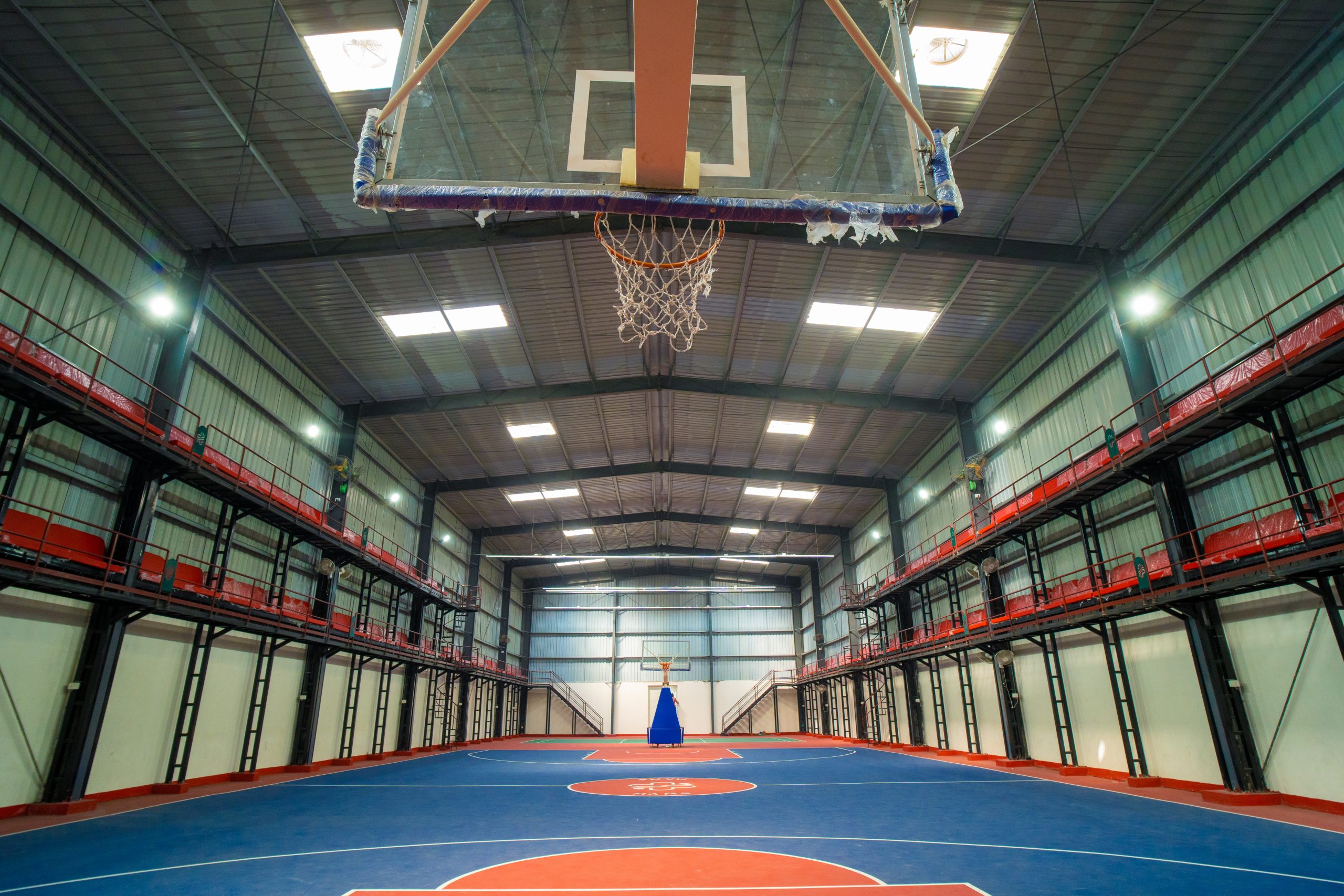





Sports
Sports facilities in colleges play a vital role in promoting physical fitness, mental well-being, and holistic development among students. They provide an opportunity for students to engage in various sports, nurture their talents, and cultivate essential life skills such as teamwork, discipline, and leadership.
Features of Mams Sports Facilities
Outdoor Sports Areas:
- Fields and Courts: Well-maintained grounds for football, cricket, hockey, and athletics.
- Courts: Dedicated spaces for basketball, volleyball, tennis, and badminton.
- Track and Field: Running tracks, long jump pits, and other athletics-specific infrastructure.
Indoor Sports Facilities:
- Gymnasiums equipped with modern fitness equipment and space for yoga or aerobics.
- Indoor courts for badminton, squash, table tennis, and basketball.
- Recreational rooms for chess, carrom, and other board games.
Specialized Training Zones:
- High-performance centers for advanced training.
- Spaces for martial arts, gymnastics, and other specialized sports.
Equipment and Amenities:
- High-quality sports equipment for training and competitions.
- Locker rooms, shower areas, and changing rooms for convenience.
Spectator Facilities:
- Seating arrangements for students and visitors to watch tournaments and matches.
- Audio systems and display boards for live commentary and updates.
Benefits of Sports Facilities in College
Physical Fitness:
- Encourages students to maintain a healthy and active lifestyle.
- Reduces stress and boosts energy levels through regular physical activity.
Skill Development:
- Enhances coordination, agility, and endurance.
- Develops critical life skills like leadership, teamwork, and resilience.
Career Opportunities:
- Provides a platform for aspiring athletes to pursue sports as a professional career.
- Opens avenues for scholarships, competitions, and talent recognition.
Social Interaction:
- Promotes camaraderie and networking among students from diverse backgrounds.
- Strengthens bonds through team sports and group activities.
Mental Well-being:
- Improves focus, concentration, and mood by balancing academic pressures.
- Builds confidence and self-esteem through accomplishments in sports.
Initiatives and Activities
Sports Clubs and Committees:
- Student-led clubs to encourage participation and organize events.
- Committees to oversee facility management and competitive opportunities.
Intercollegiate Competitions:
- Participation in tournaments and leagues at local, national, and international levels.
- Hosting annual sports fests to showcase talent and foster healthy competition.
Coaching and Training:
- Access to professional coaches for skill enhancement.
- Regular practice sessions and fitness programs for all levels of players.
Inclusive Opportunities:
- Facilities and programs designed for differently-abled students.
- Introduction of non-traditional sports to encourage broader participation.
Maintenance and Upkeep
Regular Maintenance:
- Routine inspection and repair of equipment, fields, and courts.
- Ensuring cleanliness and hygiene in locker rooms and other facilities.
Feedback Mechanism:
- Gathering input from students and staff to improve usability and accessibility.
Safety Standards:
- Installation of safety gear and first-aid stations at all sports venues.
- Clear guidelines and supervision to minimize the risk of injuries.




